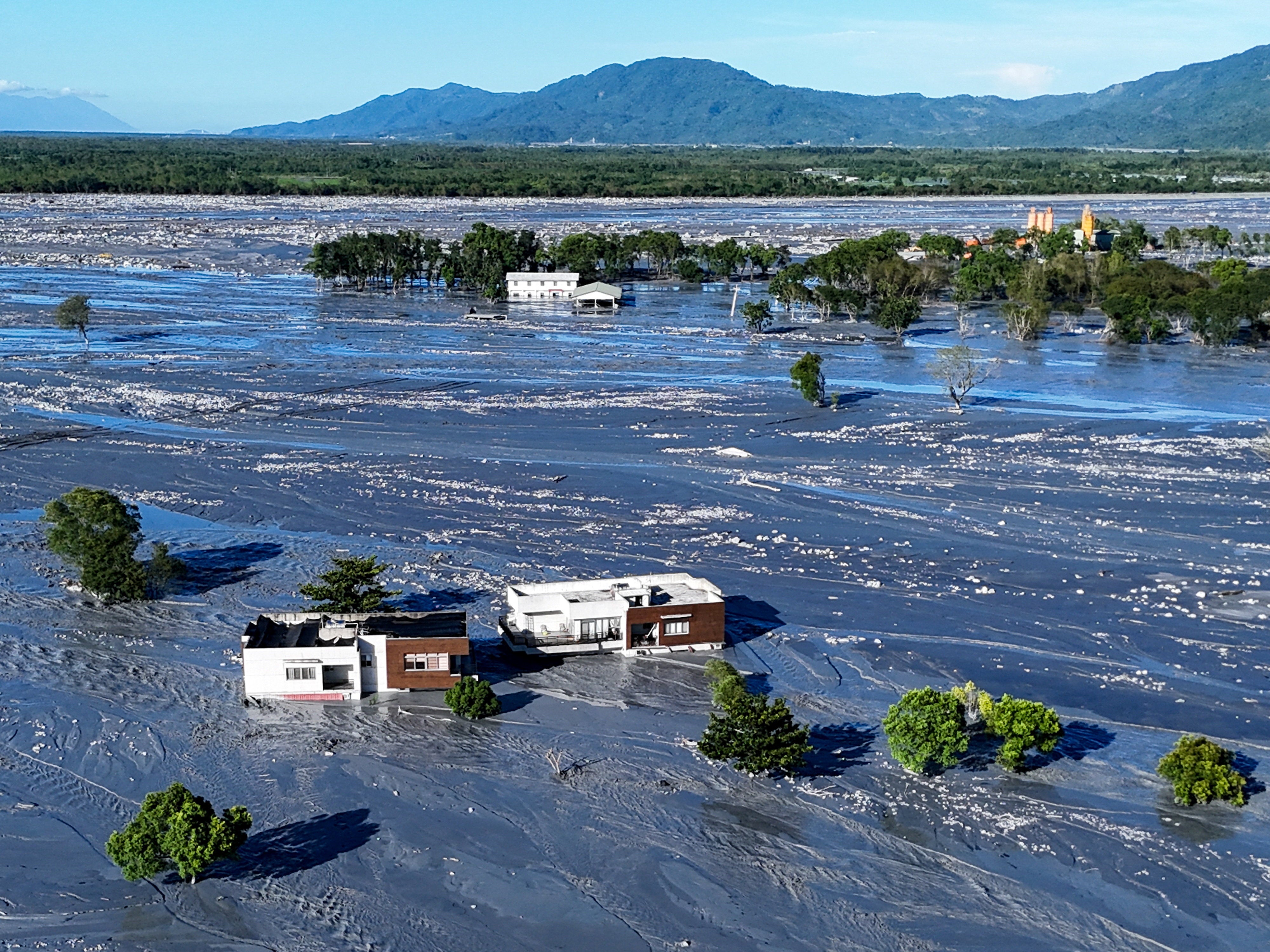Rescue workers in Taiwan are wading through waist-deep dark grey sludge, cutting holes in roofs and prising open wrecked homes as they search for the missing after Super Typhoon Ragasa unleashed a wall of water on the east coast.
At least 15 people have been confirmed dead and seven remain unaccounted for in Guangfu township, where a barrier lake burst on Tuesday, sending torrents of mud and water crashing through a rural community of just a few thousand.
Survivors described the surge as impossible to outrun, with many elderly residents unable to climb upstairs in time.
The storm’s impact is now being felt across the region. In China’s Guangdong province, where Ragasa made landfall on Wednesday, nearly half a million households lost electricity as winds ripped down power lines and trees.
Officials said almost 90 per cent of users had power restored within a day, deploying 50,000 workers and thousands of vehicles in one of the country’s fastest-paced repair operations.
Insurance claims were fast-tracked, with some settlements processed in under an hour, while streets in cities like Zhuhai were still being pumped clear of floodwaters.

Economic ripples have also spread beyond the disaster zone. Foxconn, Apple’s biggest supplier, suspended work at one of its Shenzhen sites earlier this week, just days after the launch of the iPhone 17, the South China Morning Post reported.
Cross-border logistics were paralysed as ports and warehouses shut, halting shipments for platforms such as Amazon and Shopee and leaving merchants warning of delays to pre-holiday orders.
In Hong Kong and Macau, where hurricane-force gusts toppled cranes and waves taller than lampposts smashed promenades, life is only just resuming after more than 1,000 flights were cancelled and power was cut to low-lying districts.
Videos from Macau showed residents fishing in knee-deep floodwater, scooping up shoals of fish swept into the city streets. In Hong Kong, more than 90 people were injured, and supermarkets were stripped bare as people stocked up for days indoors.
Ragasa first struck the Philippines earlier in the week, where 11 people were killed, including fishermen swept away in rough seas, and thousands were forced from their homes.
By Friday, the typhoon had weakened to a tropical depression and was drifting towards Vietnam, but the aftermath it left behind was immense: mud-caked towns in Taiwan, shuttered factories in southern China, and millions of people whose lives were upended in the space of days.
Scientists warn that storms in Asia’s typhoon belt are intensifying as oceans warm, placing ever larger populations at risk of exactly the kind of devastation seen this week.




